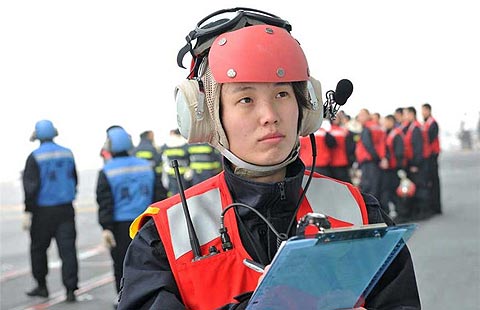Witnesses carried the truth about history
Updated: 2014-03-24 08:15
By Yang Yang (China Daily)
|
||||||||
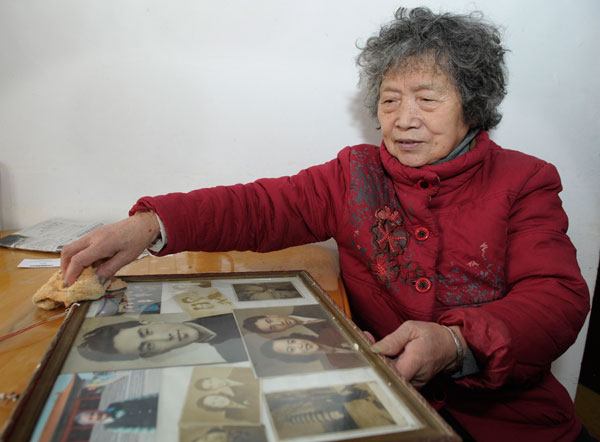 |
|
Ding Zhenglan, an 85-year-old survivor of the Nanjing Massacre, cleans a frame containing photos of her late husband Li Jun.[Photo provided to China Daily] |
Rape and murder
Survivor Ding Zhenglan, 85, recalled: "I could see bodies everywhere on the streets. The most hideous places were the bomb shelters. They (the Japanese soldiers) knew people hid in them during air raids and shot them with machine guns. The bodies were piled high".
Ding said she would never forget the screams of a 12-year-old local girl who was raped by Japanese soldiers. The Tokyo War Crimes Tribunal estimated that 20,000 women and girls were raped during the first month of the occupation. To cover their crimes, the soldiers usually killed their victims.
"Many elderly women in their 60s and 70s who did not want to leave their homes were killed after being raped," said 90-year-old Jin Hongying.
When they related their memories, the elderly women were visibly agitated. They asked: Why doesn't the Japanese government admit the historical facts? "Facts are facts. We were there and we saw it all," Ding said.
For Yang Shanyou, 48, director of Nanjing University John Rabe International Safety Zone and Memorial Hall, acknowledging history is a crucial activity. "The present and the future will eventually become history. If a certain historical period is a blank for a country, it means it has no future."
Because they escaped to a safety zone in the nick of time, Ding, Jin and their families escaped death. Ding's family took refuge at No 3, Shanghai Road, while Jin's family stayed at Nanking Bible Training School in Dajiangyin Alley.
To protect Jin's 16-year-old sister-in-law from the soldiers who raided the school for girls, their mother dressed the young woman like an old lady, smeared ash on her face and sent her to Ginling Women's College, which was under Vautrin's protection.
In late November 1937, foreseeing the looming disaster for local civilians, 15 expats from the United States, the United Kingdom, Germany and Denmark set up an International Committee and a safety zone. The 3.86-square-kilometer zone consisted of 25 locations that provided food and shelter for around 250,000 refugees, but it came to an end in February 1938, when Rabe was sent back to Germany.
The grateful refugees idolized expats such as Rabe and Vautrin. "Without Miss Vautrin, it's unimaginable how many young women would have been ruined by the Japanese soldiers," Jin said.
It's estimated that Ginling Women's College, which primarily offered shelter to young women and their children, received about 15,000 refugees. With so many young women gathered together, the place quickly became a target. The middle-aged Vautrin was often threatened by bayonet-wielding soldiers who demanded huaguniang, or "beautiful girls".
Vautrin worked from early morning to late at night to get enough food for the refugees, many of whom had narrowly escaped death and were penniless. She tried to arrange lessons to help the women learn skills and crafts that would help them to make a living after the war. Sometimes, despite her efforts, she was unable to prevent Japanese soldiers from raping women in the college and carrying them away.
On Dec 24, 1937, Vautrin .wrote in her diary that she had allowed some Japanese soldiers to take away 21 prostitutes because they promised that once they got them they would leave the other women alone.
Eventually, Vautrin suffered a nervous breakdown and returned to the US for treatment in May 1940 after 28 years in China. A year later, she killed herself at her home in Illinois. Her tombstone was engraved four characters meaning "Forever Ginling" in memory of her contribution to Nanjing and its people.

 Microsoft to end support for Windows XP
Microsoft to end support for Windows XP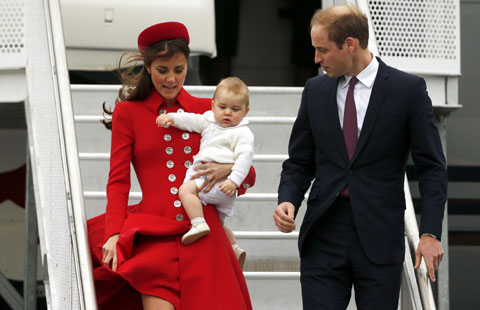
 Poor weather greets baby prince
Poor weather greets baby prince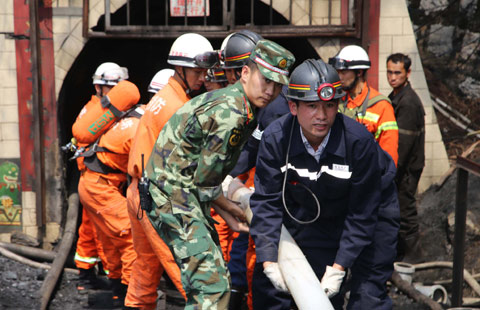
 22 miners trapped in Yunnan coal mine flood
22 miners trapped in Yunnan coal mine flood
 Top 10 richest banks in the world
Top 10 richest banks in the world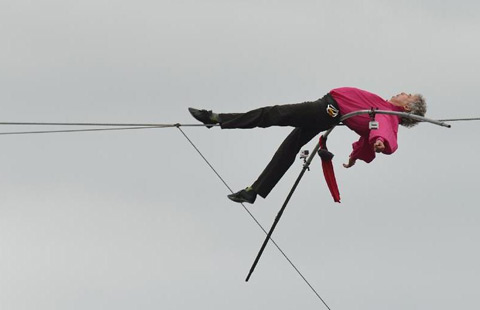
 Tightrope walker completes walk over Seine river in Paris
Tightrope walker completes walk over Seine river in Paris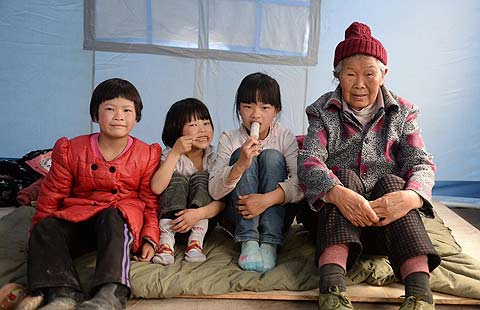
 Weekly Photos: March 31 - April 6
Weekly Photos: March 31 - April 6
 Pistorius takes stand in own defence at murder trial
Pistorius takes stand in own defence at murder trial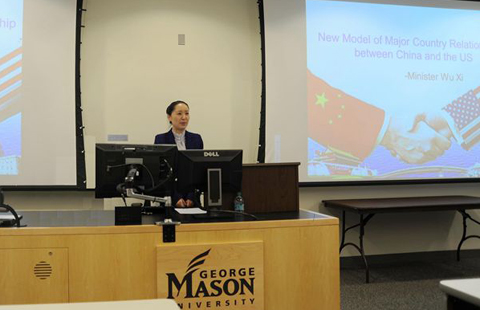
 China minister cautions US
China minister cautions US
Most Viewed
Editor's Picks
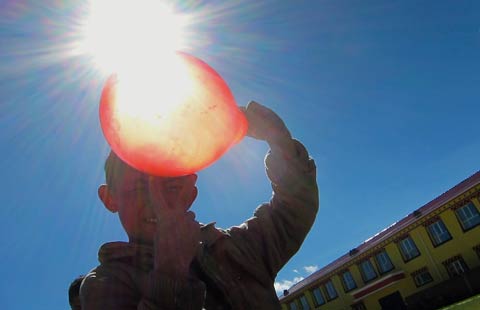
|
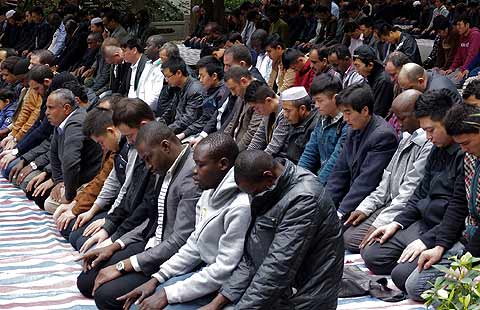
|

|
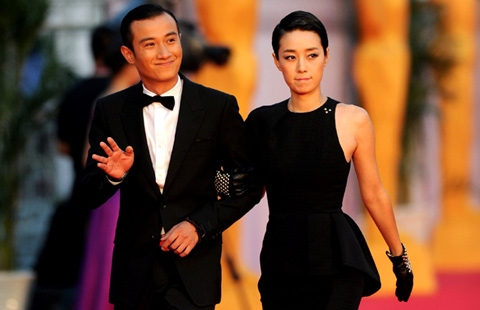
|

|

|
Today's Top News
Hagel's insensible remarks
Media: Japan, US differ in alliance expectations
Pro-Russians declare independence in Donetsk
China tours by Pentagon chiefs
Chinese military institutions visited by US officials
Xinjiang chairman vows to stop religious extremism
Pistorius takes stand in own defence at murder trial
ROK takes seriously DPRK aerial reconnaissance
US Weekly

|

|



